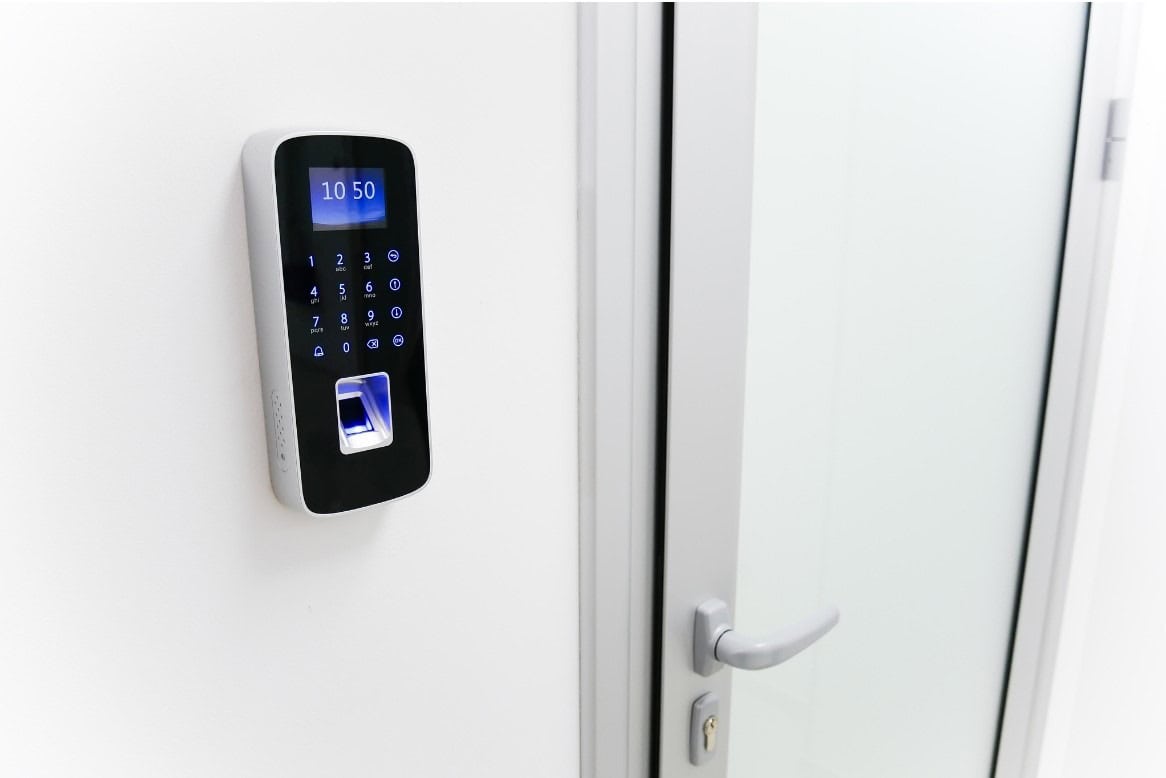Ensuring compatibility between keypad systems and your current setup is crucial in enhancing security and access control within your environment. Keypad systems are vital in granting or restricting access to individuals based on predefined codes or credentials, making them integral components of various security solutions. From residential gates to industrial facilities, the seamless integration of keypad systems ensures smooth operation and effective management of access points.
By understanding the intricacies of your existing infrastructure and evaluating compatibility considerations, you can optimize the functionality of keypad systems to effectively meet your security objectives. This article provides:
- Guidance on navigating the complexities of integrating keypad systems with your current setup.
- Offering valuable insights into installation and configuration.
- Troubleshooting to facilitate a seamless transition toward enhanced access control capabilities.
Understanding Keypad System Integration
Keypad systems serve as the gateway to controlled entry, allowing individuals to gain access through the input of designated codes or credentials. Integration involves seamlessly incorporating these systems into existing access control setups, ensuring smooth operation and maximum efficiency. Whether you’re securing a residential property, a commercial facility, or an industrial site, grasping the fundamentals of keypad system integration empowers you to make informed decisions about your security needs.
One key aspect of understanding keypad system integration is evaluating the system’s compatibility with your current setup. This involves assessing factors such as the type of access control infrastructure you have in place, the technology used, and any potential limitations or challenges that may arise during integration. By conducting a thorough compatibility assessment, you can identify potential issues early on and devise appropriate solutions to ensure a seamless integration process.
Modern keypad systems offer various capabilities, including customizable access codes, remote management options, and integration with other security technologies, such as surveillance cameras and alarm systems. Understanding how these features align with your security objectives enables you to harness the full potential of keypad systems and tailor them to suit your needs.
Assessing Your Existing Infrastructure
Assessing your existing infrastructure is a crucial first step in integrating keypad systems into your security setup. This assessment thoroughly examines your current access control systems, including any existing keypads or entry mechanisms. By understanding the strengths and limitations of your current infrastructure, you can better determine how keypad systems can complement and enhance your overall security strategy.
One aspect of assessing your existing infrastructure is evaluating the technology and protocols already in use. This includes identifying the types of access control systems you currently have installed, such as traditional lock-and-key mechanisms, card readers, or biometric scanners. Understanding the technology powering your current setup is essential for determining how keypad systems can integrate seamlessly and provide added functionality without disrupting existing operations.
Assessing your existing infrastructure involves considering your property’s physical layout and design. This includes identifying key access points, high-traffic areas, and any areas requiring special security considerations. By mapping out your property’s layout and assessing potential vulnerabilities, you can strategically deploy keypad systems in locations that maximize security coverage and minimize potential risks.
Assessing your infrastructure requires taking stock of security policies, protocols, and compliance requirements. This includes understanding any regulatory standards or industry best practices that may impact the integration of keypad systems into your security strategy. By ensuring alignment with these requirements from the outset, you can avoid potential compliance issues and ensure your keypad system integration meets the highest security and reliability standards.
Compatibility Considerations for Keypad Systems
When considering compatibility for keypad systems, assessing how well these systems integrate with your existing security infrastructure is essential. Compatibility encompasses various factors, including technological compatibility, physical compatibility, and compatibility with your security objectives. Technological compatibility ensures that the keypad system you choose can seamlessly integrate with other security technologies and software platforms you currently utilize. Whether compatibility with access control software or integration with surveillance cameras and alarm systems, selecting a keypad system that aligns with your existing technology stack is vital for a smooth and efficient integration process.
Physical compatibility is another critical aspect to consider when evaluating keypad systems. This involves assessing whether the keypad’s physical design and dimensions align with your property’s layout and architecture. Choosing keypad systems that can be easily installed in the desired locations without requiring significant modifications to your property’s infrastructure is essential. Additionally, considering environmental factors such as weather resistance and durability ensures that the keypad system can withstand the conditions of its installation environment, whether indoors or outdoors.
Moreover, compatibility considerations extend beyond technical and physical aspects to encompass user experience and usability. The keypad interface’s ease of use and intuitiveness significantly ensure smooth operation and user adoption. Customers should look for keypad systems with user-friendly interfaces and features like backlighting for nighttime use and audible feedback for successful entries. By prioritizing user experience in their compatibility assessments, customers can ensure that the keypad systems they choose are technically compatible, user-friendly, and accessible to all authorized users.
Lastly, compatibility considerations should also consider future scalability and expansion opportunities. As your security needs evolve and grow, your keypad system should be able to scale accordingly to accommodate additional access points, users, and functionalities. Choosing a keypad system that offers scalability and flexibility ensures that your investment remains future-proof and can adapt to the changing needs of your security infrastructure over time.
Key Features to Look for in Keypad Systems
When evaluating keypad systems, there are several key features that potential customers should look for to ensure they meet their security requirements effectively. These features enhance security and contribute to ease of use and overall system reliability. Here are some essential features to consider when selecting a keypad system:
- Advanced Security Features: Choose keypad systems with advanced security features such as encryption, multi-factor authentication, and anti-tamper mechanisms. These features help prevent unauthorized access and enhance overall system security.
- Customizable Access Codes: Look for keypad systems that allow you to create customizable access codes. This will enable you to tailor access permissions based on user roles and security requirements. This flexibility ensures that you can easily manage access to different areas of your property.
- Remote Management Capabilities: Opt for keypad systems that offer remote management capabilities, allowing you to monitor and manage access control settings from anywhere with an internet connection. Remote management features streamline administrative tasks and provide greater flexibility in managing access control.
- Integration with Other Security Technologies: Consider keypad systems that seamlessly integrate with other security technologies, such as surveillance cameras, alarm systems, and access control software. Integration enables a more comprehensive security solution and enhances overall system functionality.
These key features empower customers to select keypad systems that meet their immediate security needs and provide flexibility, scalability, and enhanced functionality for future growth and expansion. By prioritizing these features in their selection process, customers can ensure they invest in a keypad system that offers maximum security and usability for their property.
Installation and Configuration Guidelines
Installing and configuring keypad systems requires careful planning and execution to ensure optimal performance and security. Whether you’re implementing keypad systems for residential, commercial, or industrial purposes, following these guidelines can help streamline the installation process and maximize the effectiveness of your security infrastructure:
- Site Assessment: Conduct a thorough site assessment before installation to identify optimal locations for keypad placement. Consider factors such as proximity to entry points, visibility, and user accessibility. Assess environmental conditions such as exposure to weather elements and potential tampering risks.
- Wiring and Power Supply: Ensure proper wiring and power supply for the keypad systems. Follow manufacturer guidelines for wiring specifications and voltage requirements to prevent electrical issues and ensure reliable operation. If installing outdoor keypad systems, consider using weatherproof enclosures and surge protection to safeguard against environmental hazards.
- Mounting and Installation: Mount keypad systems securely on stable surfaces using appropriate mounting hardware. Follow manufacturer instructions for installation procedures, including proper alignment and calibration. Test the keypad functionality after installation to verify proper operation and address any issues promptly.
- Configuration and Programming: Once installed, configure the keypad systems to align with your security requirements. Set up access codes, user permissions, and other parameters per your security policy. Test the keypad functionality thoroughly to ensure all features work correctly and access control settings are enforced as intended.
By adhering to these installation and configuration guidelines, customers can ensure that their keypad systems are installed correctly and configured to provide optimal security and functionality. Additionally, consulting with experienced professionals or seeking guidance from reputable providers like R3 Access can offer valuable insights and support throughout the installation process, ensuring a smooth and successful implementation of keypad systems.
Troubleshooting Compatibility Issues
Despite careful planning and installation, compatibility issues may arise due to various factors such as technological conflicts, environmental conditions, or configuration errors. A systematic troubleshooting process can help identify and resolve the underlying causes efficiently when encountering compatibility issues.
One common compatibility issue with keypad systems is integration conflicts with existing access control technologies or software platforms. Verify compatibility between the keypad system and other security infrastructure components to address this issue. Check for firmware updates or compatibility patches that may resolve integration conflicts and ensure smooth communication between systems.
Environmental factors can also contribute to compatibility issues with keypad systems, particularly outdoor installations exposed to harsh weather conditions. If you experience keypad malfunctions or erratic behavior, inspect the installation environment for potential sources of interference, such as moisture, extreme temperatures, or physical damage. Protective measures such as weatherproof enclosures or surge protection can mitigate environmental factors and improve system reliability.
Furthermore, configuration errors or misaligned settings may cause compatibility issues with keypad systems, resulting in functionality issues or access control failures. Review the keypad system’s settings and parameters when troubleshooting configuration issues to ensure they align with your security requirements. Double-check access codes, user permissions, and access control rules to identify any discrepancies or misconfigurations affecting system performance.
Contact R3 Access
Whether you’re securing a residential community, a commercial facility, or an industrial site, R3 Access is here to help you achieve optimal security and peace of mind. Contact us now to learn more about our keypad systems and how we can assist you in enhancing your security infrastructure.
Keypad Systems by Top Manufacturers
Cellgate: Watchman W460
A gate access control system equipped with a keypad, designed for secure entry management with advanced features for monitoring and communication.
Key Features:
- Secure keypad entry
- Advanced monitoring capabilities
- Two-way communication system
- Remote access and control
- Real-time alerts and notifications
- Easy integration with existing systems
Liftmaster: CAPXLV
A cloud-based access control system featuring a keypad, offering remote management and seamless integration for enhanced security and convenience.
Key Features:
- Cloud-based remote management
- Secure keypad access
- Seamless integration with other systems
- Enhanced security features
- User-friendly interface
- Real-time monitoring and alerts
FAAC: Easypass 100
A reliable keypad access control system that ensures secure entry with user-friendly operation, suitable for various access control needs.
Key Features:
- User-friendly keypad operation
- High security and reliability
- Easy installation and setup
- Suitable for diverse access control applications
- Durable and robust design
- Flexible access management options


